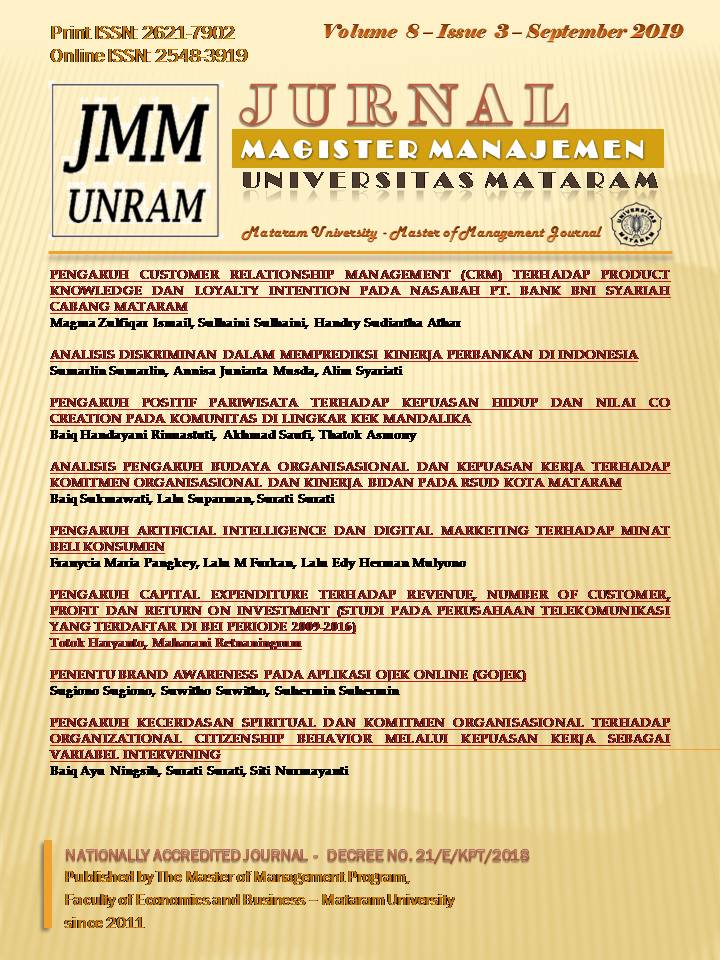ANALISIS DISKRIMINAN DALAM MEMPREDIKSI KINERJA PERBANKAN DI INDONESIA
DOI:
https://doi.org/10.29303/jmm.v8i3.417Keywords:
Bank Performance, Prediction, Discriminant AnalysisAbstract
This study aims to determine the contribution of financial ratios into the classification of banks’ performance into good, fairly good and less good by using discriminant analysis. This research is quantitative with data amounted from 34 banks. The results of five banking financial ratios that can distinguish the status of the banking performance level is CAR, ROA, ROA and NPL. Four variables have a significant influence in differentiating the well-performing banks, the fairly good and less good. First equation to predict differences in banking groups is Non-Performing Loan. Second discriminant equation shows that the ratio predicting the most dominant group differences is ROA.References
Brigham, E.F., dan J.F. Houston. Manajemen Keuangan. Jakarta: Erlangga.
Dendawjaya, L. (2009). Manajemen Perbankan. Jakarta: Ghalia Indonesia.
IAI. (2009). Standar Akuntansi Keuangan. Jakarta: Salemba Empat.
Kepatuhan. Jakarta: Grafiti Pers.
Kretarto, A. (2001). Investor Relation: Pemasaran dan Komunikasi Keuangan Perusahaan Berbasis
Machfoedz, M. (1999). Akuntansi Manajemen 2. Edisi 3. Yogyakarta: BPFE. 1999
Merkusiwati, N.K. L.A. (2007). Evaluasi Pengaruh Camel Terhadap Kinerja Perusahaan.
Munawir. Analisis Laporan Keuangan. (2008). Edisi Keempat. Yogyakarta: Liberty
Syariati, A. (2012). The Effect Of Islamic Commercial Banks’ health And Their Cost Of Fund Upon Its Financing In Indonesia Over 2005-2009. Proceeding of International Conference of AIMI Indonesia.
Downloads
Published
How to Cite
Issue
Section
License
- Authors retain copyright and grant the journal right of first publication with the work simultaneously licensed under a CC BY 4.0. This license allows authors to use all articles, data sets, graphics, and appendices in data mining applications, search engines, web sites, blogs, and other platforms by providing an appropriate reference. The journal allows the author(s) to hold the copyright without restrictions and will retain publishing rights without restrictions.
- Authors are able to enter into separate, additional contractual arrangements for the non-exclusive distribution of the journal's published version of the work (e.g., post it to an institutional repository or publish it in a book), with an acknowledgment of its initial publication in JMM.
- Authors are permitted and encouraged to post their work online (e.g., in institutional repositories or on their website) prior to and during the submission process, as it can lead to productive exchanges, as well as earlier and greater citation of published work (See The Effect of Open Access).










